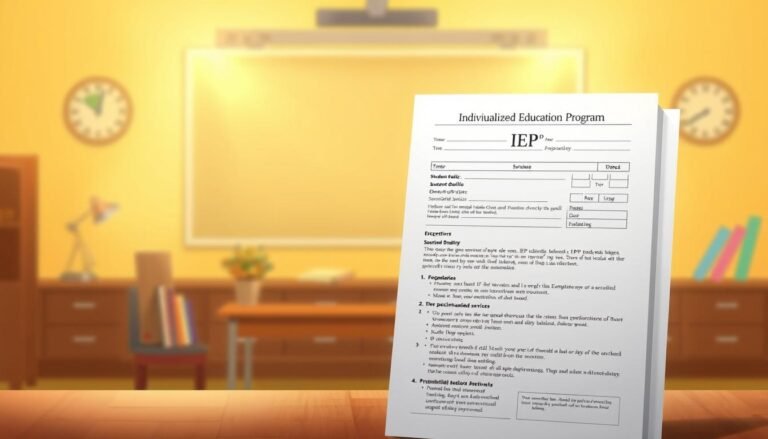
Empowering Our Kids: Proven Strategies for Parenting Successfully with Learning Disabilities
Introduction
In today’s diverse educational landscape, understanding and addressing learning disabilities is more critical than ever. Parents often face the daunting challenge of guiding their children through the complexities of learning differences. Navigating this journey can feel overwhelming, but it also presents an extraordinary opportunity for empowerment and growth. By implementing effective strategies, parents can not only support their children in overcoming obstacles but can also cultivate a sense of confidence and resilience that will serve them throughout their lives. This article will explore Empowering Our Kids: Strategies for Parenting Successfully with Learning Disabilities, providing insights, tools, and real-world examples to help parents excel in their roles as advocates and nurturers.
Understanding Learning Disabilities
Before we delve into strategies, it’s essential to understand what learning disabilities are and how they manifest. Learning disabilities encompass a range of neurological disorders that affect the brain’s ability to receive, process, and respond to information. These can include dyslexia (difficulty with reading), dyscalculia (difficulty with math), and dysgraphia (difficulty with writing), among others.
The Importance of Early Identification
Identifying learning disabilities as early as possible is crucial for effective intervention. Early identification allows parents to seek early diagnosis and appropriate support. This not only improves educational outcomes but also enhances children’s self-esteem and motivation.
Case Study: Early Detection in Jerry’s Journey
Consider the case of Jerry, a seven-year-old boy diagnosed with dyslexia. His parents noticed his difficulties with reading early on and worked with educators to implement a tailored reading program. By starting early, Jerry received the necessary interventions and developed coping strategies, leading to improved academic performance and self-confidence. This emphasizes the importance of timely identification as outlined in Empowering Our Kids: Strategies for Parenting Successfully with Learning Disabilities.
Building a Supportive Environment
Creating an environment that fosters learning and growth is vital. This involves not just academic support but also emotional and social reinforcement.
1. Establishing Routines
Consistency can be a significant factor in the success of children with learning disabilities. Establishing daily routines helps children feel secure and understand what to expect throughout the day.
2. Positive Reinforcement
Celebrate achievements, no matter how small. Positive reinforcement encourages children to persevere and strive for improvement. Parents can use reward systems to motivate their children, reinforcing the behaviors they want to see.
3. Effective Communication
Open lines of communication reduce misunderstandings and foster trust. Encourage children to express their feelings and concerns about their learning experiences.
Table 1: Communication Strategies
| Strategy | Description |
|---|---|
| Active Listening | Show empathy by listening attentively and validate feelings. |
| Open-Ended Questions | Encourage deeper discussion by asking questions that can’t be answered with a simple "yes" or "no." |
| Regular Check-Ins | Schedule consistent times to discuss academic progress and emotional well-being. |
Collaborating with Educators
Building strong partnerships with teachers and school staff is essential for effective advocacy.
1. Team Approach
Engage in collaborative discussions with educators about your child’s strengths, challenges, and needs. A cohesive team can implement tailored strategies that reinforce progress both at home and school.
2. Individualized Education Plans (IEPs)
Familiarize yourself with the IEP process, which outlines the specific educational needs and accommodations for your child. Understanding your child’s IEP allows you to advocate effectively for the resources they require.
3. Regular Feedback Loop
Establish regular communication with teachers, including scheduled meetings, emails, or phone calls. This ongoing dialogue helps parents stay informed about their child’s progress and any challenges arising in school.
Case Study: A Collaborative Approach in Emma’s Education
Emma, a ten-year-old with attention deficit hyperactivity disorder (ADHD), struggled in a traditional classroom setting. Her parents worked closely with her teachers to implement an IEP that included tailored instructional strategies, such as smaller class sizes and hands-on learning activities. The collaborative approach not only improved Emma’s focus but also helped her build positive relationships in school, illustrating key elements of Empowering Our Kids: Strategies for Parenting Successfully with Learning Disabilities.
Encouraging Independence and Self-Advocacy
As children grow, it’s essential to encourage independence and self-advocacy skills.
1. Goal Setting
Help your child set realistic, achievable goals. Break these goals into smaller, manageable steps, allowing them to experience success along the way.
2. Self-Reflection
Encourage your child to reflect on their learning experiences. What strategies worked? What didn’t? This practice empowers them to understand their unique learning processes and adjust their approaches accordingly.
3. Coping Strategies
Teach your child coping mechanisms for managing frustration, anxiety, and disappointment. This can include mindfulness techniques, breathing exercises, or physical activity to channel excess energy.
Table 2: Coping Strategy Examples
| Strategy | Description |
|---|---|
| Mindfulness Practices | Teach breathing techniques to manage stress. |
| Physical Activity | Encourage regular exercise to reduce anxiety and increase focus. |
| Breaks and Downtime | Allow for short breaks during demanding tasks to refresh attention. |
Fostering Social Skills
Social skills are often challenging for children with learning disabilities. Here’s how to create opportunities for social growth.
1. Structured Social Activities
Enroll your child in structured groups or activities that encourage interaction with peers. This could be in the form of sports, clubs, or community classes.
2. Role-Playing
Practice common social scenarios with your child to enhance their confidence in social settings. Role-playing various situations enables children to develop responses and understand social cues.
Case Study: Enhancing Social Skills in Liam’s Life
Ten-year-old Liam struggled with making friends due to his learning disability. His parents enrolled him in a local art class, where he had the opportunity to work on collaborative projects. Through art, Liam learned to express himself and connect with peers, which boosted his social confidence. This case highlights the social component of Empowering Our Kids: Strategies for Parenting Successfully with Learning Disabilities.
Creating Awareness and Advocacy
Educating others about learning disabilities plays a significant role in supporting your child’s journey.
1. Community Involvement
Engage with your local community to raise awareness about learning disabilities. Participate in workshops, seminars, and events that foster understanding and inclusion.
2. Sharing Experiences
Share your experiences with other parents facing similar challenges. Building a network of support can offer emotional encouragement and practical advice.
Conclusion
Empowering our kids with learning disabilities is not just about supporting their academic pursuits; it’s also about nurturing their self-esteem, independence, and social skills. By employing proven strategies that include establishing supportive routines, collaborating with educators, and encouraging self-advocacy, parents can create an environment that propels their children toward success.
As we continue to explore Empowering Our Kids: Strategies for Parenting Successfully with Learning Disabilities, remember that every child’s journey is unique. Embrace their individuality, celebrate their progress, and most importantly, trust in your ability as a parent to guide them through the challenges they face. Together, we can instill confidence and resilience in our children, empowering them for a bright and successful future.
FAQs Section
1. What are some common signs of learning disabilities in children?
Common signs may include difficulties with reading, writing, or math, poor coordination, trouble following instructions, and challenges with organizing tasks.
2. How can I effectively advocate for my child in school?
Stay informed about your child’s needs, build relationships with teachers, be clear about your concerns, and request meetings to discuss your child’s IEP if applicable.
3. What resources are available for parents of children with learning disabilities?
Many resources exist, including support groups, educational workshops, and advocacy organizations. Websites like the Learning Disabilities Association of America or Understood.org provide valuable information.
4. How can I support my child emotionally?
Encourage open communication, validate their feelings, and teach coping strategies for managing frustration and anxiety.
5. At what age should I seek help if I suspect my child has a learning disability?
If you notice persistent difficulties in learning that seem out of the norm for their age, it’s advisable to seek professional evaluation and support at any age.
In conclusion, empowering our kids isn’t just a mantra—it’s a mindset. By implementing the strategies outlined in this article, we are taking actionable steps towards ensuring that our children not only succeed academically but also thrive as individuals. The journey may be challenging, but the rewards of resilience, confidence, and independence are limitless.
















